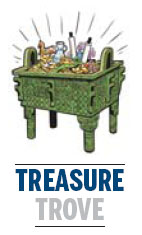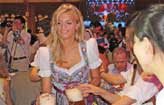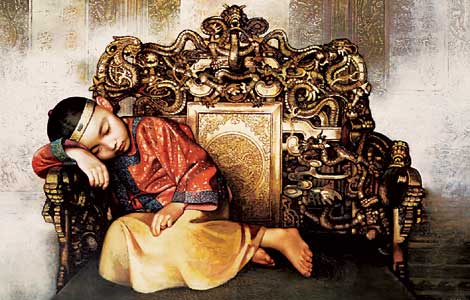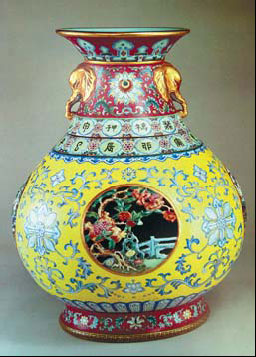Heritage
Vase exemplifies height of Qing porcelain making artistry
Updated: 2011-08-09 08:39
By Cheng Anqi (China Daily)
|
The vase with openwork decoration and revolving interior, in the collection of the Palace Museum in Beijing. Provided to China Daily |
 |
Editor's Note: Every week we look at a work of art or a cultural relic that puts the spotlight on China's heritage.
Porcelain making reached its zenith in the early period of the Qing Dynasty (1644-1911).
Emperor Qianlong (1711-1799) took a personal interest in the production of high-quality porcelains.
The imperial kilns then used their ample manpower, materials and superior technical skills to advantage to churn out a number of new varieties in exquisite colors.
A vase with openwork decoration and revolving interior, such as the one illustrated here, was one of the finest examples of Qianlong-era porcelain.
Owing to the difficult processes involved in its making, few such pieces were made and handed down.
The vase, 42 cm tall and 29 cm wide at its mouth, is housed in the Palace Museum.
It has a full and rounded body, and its neck and body can be rotated.
The neck is adorned with two elephant heads whose trunks double as handles, and the body has four openwork roundels.
Inside is a revolving inner vase whose outside is painted with pictures of children at play and garden scenes of flowers, plants, fruits, rocks and balustrades, depicting the four seasons - pictures that can be seen on the roundels, when the inner vase rotates.
Another ingenious design lies in the revolving neck and the shoulder of the outer body.
Both are marked with characters signifying 10 heavenly stems and 12 earthly branches respectively (they are together known as stem-branch or gan-zhi). The use of gan-zhi to record the lunar years, months, days and hours has a long history in China.
The neck is rotated till its symbol corresponds with the appropriate lower symbol.
As the series of stem-branch combinations is completed every 60 years, and then repeated ad infinitum, the vase could serve as a lunar calendar, combining the stems and branches to designate the years, months and days in the traditional Chinese way.
The neck, body and base of the outer vase, and body of the inner vase were first fired as four separate pieces.
The inside part of the outer base, on which the whole rests, is the socket and the rounded base of the inner vase the ball, so they fit together and act as a free moving ball-and-socket joint.
With these two parts in position, the outer wall was then placed over and fixed to its base, leaving the neck to be fitted at the top.
At the crucial joint which had to remain fixed to achieve stability and allow free rotation of the other moving parts, a special adhesive paste was employed whose properties allowed subsequent adjustment and, when ready, scraping, polishing and decorating.
The illusion of a perfect and seamless vase was thus achieved.
China Daily

Specials

Star journalist leaves legacy
Li Xing, China Daily's assistant editor-in-chief and veteran columnist, died of a cerebral hemorrhage on Aug 7 in Washington DC, US.

Beer we go
Early numbers not so robust for Beijing's first international beer festival

Lifting the veil
Beijing's Palace Museum, also known as the Forbidden City, is steeped in history, dreams and tears, which are perfectly reflected in design.
